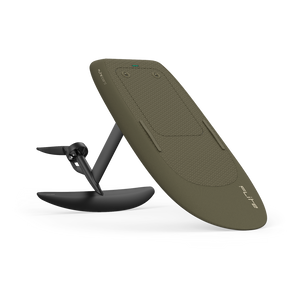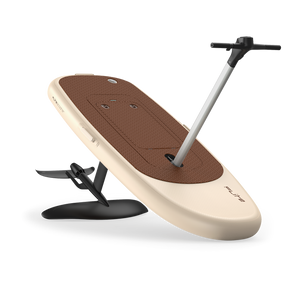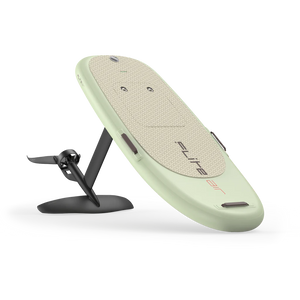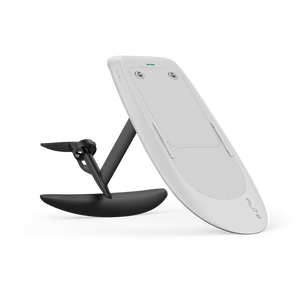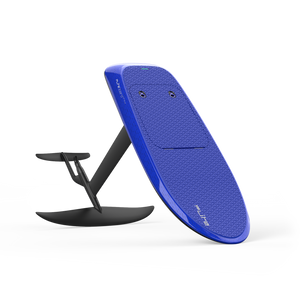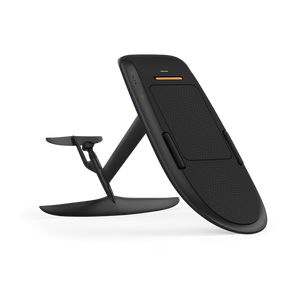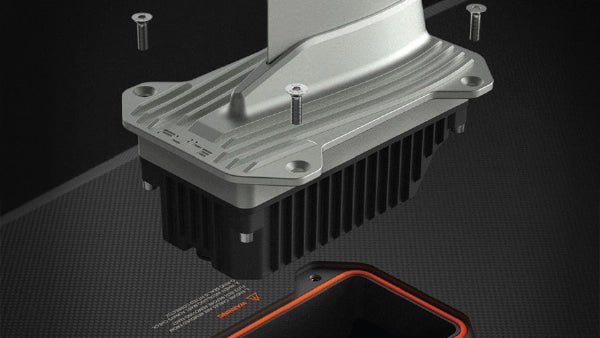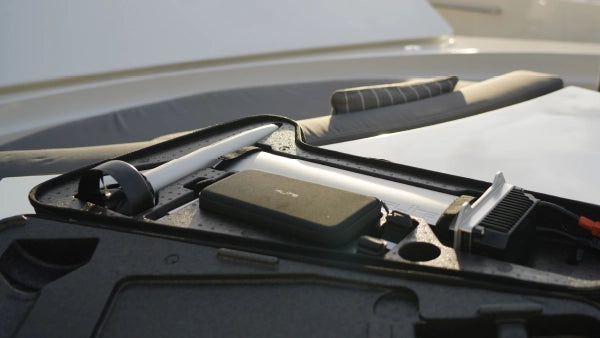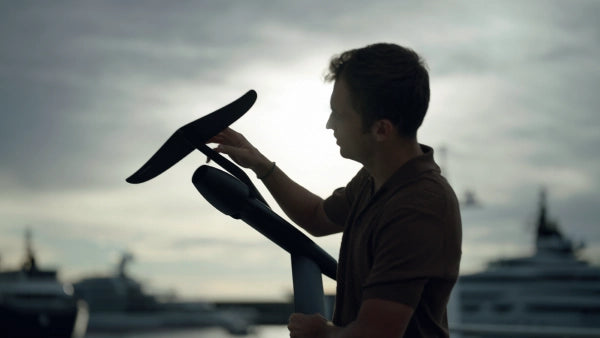Ride faster with pro tips from Simon Axmann
Estimated reading time: 6 minutes
Simon Axmann has been with Flite for 4 years, combining his passion for engineering and product management with his love of being on the water. As a battery engineer, test rider and member of Flite’s Performance Team, he has an incredible wealth of Fliteboarding knowledge.

Flite: How did you get into eFoiling?
Kite surfing was a great passion for me in Melbourne. In around 2015 I got into kite foiling. That was quite new back then, there wasn't much foiling around - not even surf foiling - it was just kite surfers basically riding foils, like David Trewern (Flite founder). He started about two years before me. And ever since then I’ve been riding the foil, as flying over water is just such a great feeling. About two or three years later, the Fliteboard opportunity came up and being interested in technology and foiling and new sports, I had to give it a go as quickly as possible.
Flite: Can you tell us about your first time Fliteboarding?
Simon: I met up with David at Brunswick Heads river to try it out. I was surprised at how easy it was. I always wanted to teach everyone how to foil but it's quite a mission if you do it behind the boat or on a kite. You have to learn so many other things beforehand, before you can actually enjoy the foil, but on a Fliteboard it's a completely different story. People can pick it up in a very short amount of time. That was an eye-opener and I thought, I need to get into this as soon as possible. And the very next day I started working at Fliteboard.
Flite: That’s so fast! It’s amazing how much you’ve progressed since that first ride in 2018. Can you share some performance tips?
Simon: If you really want to progress, try not to ride in a straight line. Make sure you're going left and right. Just keep the board moving from side to side all the time. And then over time try to increase the lean angle and the speed and the frequency. When I ride a Flow wing going rail to rail, I do side to side changes below one second. So it's about 0.7 seconds on each turn, whereas two seconds would be quite slow. And then you can just do rail to rail or you can do full 90 degree or 180 degree turns. Imagine there's a slalom course in front of you and try to push harder and harder into the turns.
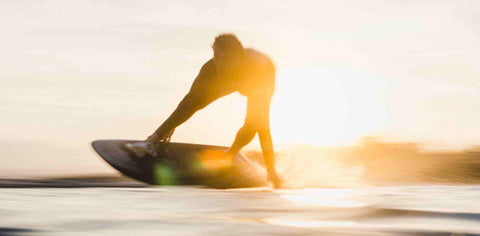
Flite: Any other advice for people trying this?
Simon: Keep the rail of the board out of the water and fly relatively low, especially at high lead angles to keep the wing in the water. And as you push hard into the turn, you need to shift your weight backwards a fair bit. As you come out of that turn, you need to shift it all the way forward and then back again. If you increase the frequency below a second, you have to do all that within one second, back front, back front, always within one second and then the whole thing becomes a great exercise and you'll have burning legs before you know it.
Flite: Was there a moment where things really shifted for you on a Fliteboard? Have there been different moments where you're like, "Whoa, I just reached a new level?"
Simon: Discovering the full speed and power potential of the Fliteboard was quite exciting. That's the 40 km/h plus range. I mean, it's been four years now, but I remember when I worked that out I was like, oh great! It’s a great thrill because at that speed even a heavy board becomes quite light and agile.
Flite: What are the key things people should know for riding fast?
Simon: The key thing is to use a fairly small wing. When it comes to wings for fast riding, I like Flow 900, Flow S 900, Flyer 800 or Race 700. With Flite 290 or Race 200 stabilizer. Reduce the shim setting as much as possible depending how fast you want to go. The zero or one shim is a good starting point, because it'll eliminate that front foot pressure at higher speeds. If you're riding a very high angle of attack on the stabilizer, say a three or four, the front foot pressure will just get out of control at some point and then that's limiting your top speed. It also makes the whole thing a little bit risky, because the foil really wants to push out of the water, which can cause the front wing to come out and suck in air. This is where you would likely crash. Everyone should only go as fast as they feel comfortable with, always wear a helmet and PFD, and do it in a safe manner.
Flite: Do people need more space than usual for riding fast?
Simon: Yes, be mindful that it'll take a lot longer to slow down and the turning radius is a lot bigger so make sure there's no one else around you. Then just use the plus and minus to slowly accelerate. Don't set it to a higher power level and accelerate hard. Just go up gear by gear until you feel it's enough. Then ride around a little bit like that. I wouldn't recommend doing the crash pilot style, just pushing and pushing until you crash. Just take your time and enjoy, it's good fun.
Flite: Those are great suggestions and it’s great that people can practice them on the ocean or a flat lake. Coming back to that first time Fliteboarding, can you believe how much you’ve done since then?
Simon: Ever since that first ride, I'm eFoiling and dreaming of eFoiling and riding and developing. I have done about 13,000 kilometres now on the eFoil, which is from here in Byron to LA, California, and I'm still looking forward to the next ride. That gives you an idea how good it actually is. I just think everyone should give it a go. Every time I go out and talk to people, they're all interested - all age groups - and I can't really teach at that moment, but I always tell people it's great fun and quite easy to learn. Everyone must experience flying over water.
Flite: And that's the thing, until you do it, you don't realize how amazing it is. It's so fun. You just can't stop smiling.
Simon: Yeah. And that's happening to 95% of the people, if not 100%. It's unbelievable that Fliteboarding opened up the door for everyone to foil. If anyone is interested they should book a lesson with one of our Fliteschools. They’ll have the time of their life and get hooked. It's quite addictive. It's a good addiction.

